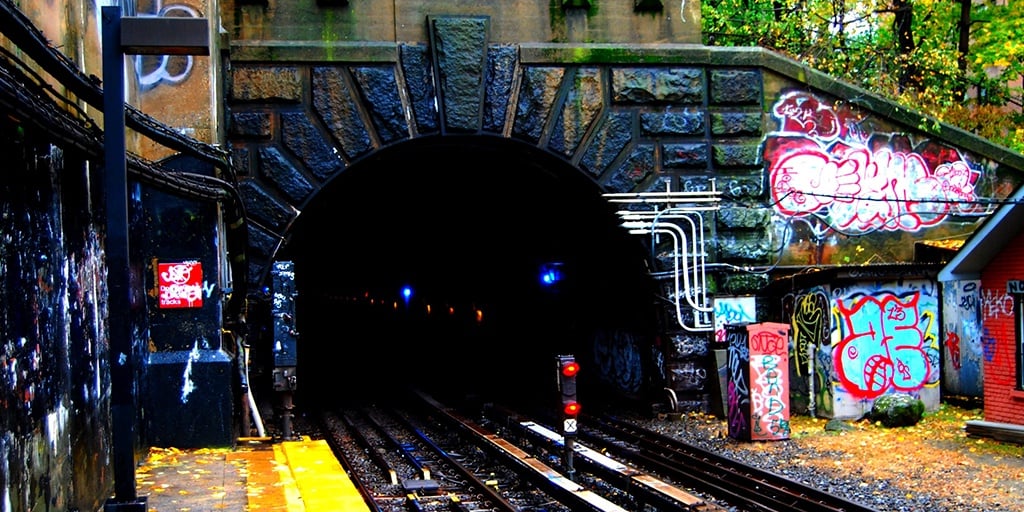Main Image Credit: 'Dyckman Street Station' by Paul Lowry under CC BY 2.0
Since 1904, the subway system has been growing underneath New York City. This underground labyrinth contains over 6,450 miles of dank, humid, often pitch-black tracks, along with 472 stations. Some of the Subway is finished and in use today, but much of it is unfinished and abandoned.
Some tunnels have yet to be discovered, such as the 76th Street Subway Station (known as the “Roswell” of tunnels), and some haven’t been used for decades. Modern urban explorers, who choose to venture below the streets, can wander for hours through the subterranean maze, and in most cases, the tunnels they explore are timeless. Except for some dirt and grime, or the occasional candy bar wrapper, many tunnels today look exactly like they did 114 years ago.
Except for one thing… the graffiti.
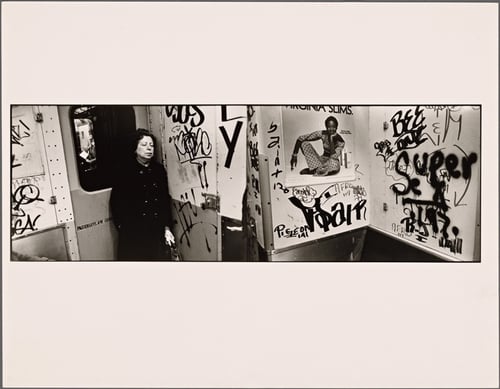
The Rise of Graffiti in New York City
According to a PBS feature, graffiti was invented in 1967 by a Philadelphia high school student who went by the pseudonym of Cornbread. On a mission to impress a girl, he decided to write his name all over the city with spray paint. Our sources didn’t indicate whether or not he got the girl, but we do know that he started an art revolution.
After Cornbread’s innovation, graffiti quickly spread to other major cities. By 1970, residents of the five boroughs could view the handiwork of their own local graffiti writers, who painted their crudely written pseudonyms on the sides and interiors of subway cars. By 1973 the spray-painted signatures had evolved into complex, colorful scripts.
Perhaps you remember commuting in those days, back when track fires disrupted train travel regularly and riders had to evacuate cars and wait. You, like most of the rest of us, probably stared morosely at the marked-up trains and tried to decipher the cryptic scripts on the sides of the cars.
Sure, graffiti didn’t cause the subway delays – but they didn’t help either.
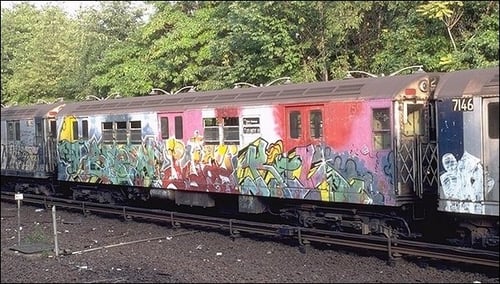
An Ambitious Effort to Clean Up the Subway
Photo Credit: nycsubway.org
If you were “lucky” on your delayed commute, your train car was a fully painted rolling work of art featuring intriguing shapes, colors, and lizard-like cartoon characters that surrounded the artist’s signature. If so, you saw the extent of graffiti control measures in the 70s: scraped-clean windows.
Clearly, paint scraping on windows wasn’t enough to curb the graffiti writers, so the Metropolitan Transit Authority (MTA) decided to adopt an aggressive anti-graffiti approach.
In 1983, the MTA painted 25% of the cars with a special, white, graffiti-resistant paint, but all that did was give the graffiti writers a blank canvas to work with. Next, the city erected a double wall of fences topped with barbed wire around the resting trains and set German Shepherds as guards, but those measures didn’t work either. Graffiti writers had a powerful drive to display their names and identities to the world, and a moving subway car was their preferred medium.
Finally, the MTA found a solution that worked. They hired David L. Gunn as the president of the Transit Authority, who had previously cleaned up trains in Boston, Philadelphia, DC, and Toronto, but even he termed the NYC subway cleanup a “suicide mission.”
Nonetheless, Gunn spearheaded the Clean Car Program, which aimed to improve track maintenance and stop track fires, reduce crime on the subways, and clear up the graffiti problem for good.
Amazingly, Gunn succeeded in his mission. Within his first three years, he cut graffiti crime by more than 85%, increased train reliability enough that ridership rose to six million people per month, and he hired 2,000 maintenance workers to scrub the trains clean 24 hours a day, 7 days a week.
By May 12, 1989, the city celebrated the final journey of the last graffiti-covered train. Gunn had cleaned, replaced, or rebuilt a total of 6,245 trains in just five years. (Yes, we know there’s still graffiti on the trains now, but it’s nothing like it used to be.)
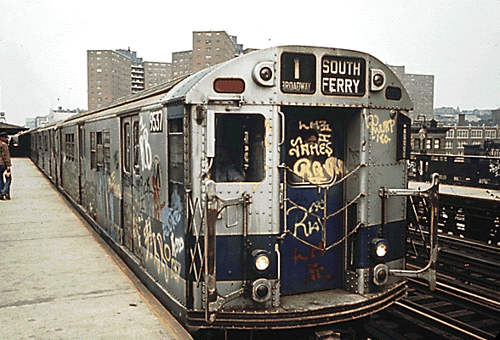 Graffiti Goes Underground
Graffiti Goes Underground
Though Gunn was able to end nearly 20 years of rampant subway graffiti on train cars, he wasn’t able to protect the entire subway system, especially considering that his clean up coincided with the rising popularity of graffiti art. The artform was becoming mainstream and its emboldened artists were unstoppable. When Gunn kicked them out of the cars, they went to the next most logical place: the subway tracks.
Now, subway riders rode on clean cars past an endlessly changing underground landscape, as graffiti writers added new works or defaced rival works overnight. If you commuted in the early 90s, you probably remember staring out the train cars’ windows at garishly colored art that flashed by like a zoetrope. When private collectors began going out at night to cut down and bring home entire graffiti-covered walls, it was almost as if graffiti art had become real art – and the underground tunnels of the subway became a bizarre gallery that displayed its masterpieces in glimpses.
And masterpieces they were. Once graffiti artists had the ability to spend hours in privacy and quiet instead of watching over their shoulders as they sprayed their name onto train-car sidings, they were able to perfect their work. They brought sophisticated techniques—including stencils, masking, and blending—into their formerly rushed endeavors, which further enriched the artistic medium.
In the tunnels underground, illegal graffiti evolved into our modern view of graffiti, that of sanctioned and commissioned street art.
Though the more mainstream (and fully legal) street art movement has now overtaken the graffiti movement, artists with roots in the illegal side of the art form still yearn for the freedom they once had to create art that claimed ownership of a secret location. In response to this need, the 2009 Underbelly Project brought together 103 of the world’s top graffiti writers to an abandoned track underground, so they could make their mark in a secret, non-commercialized venue.
To this day, no one knows where the Underbelly Project’s underground gallery is or if it still exists. According to reports, humid conditions in the venue were destroying the art even as they created it, so it may be completely gone today.
However, if you’re seeking world-class underground art in the city, the best place to look is still in the subways. The MTA Arts & Design initiative is actually one of the world’s largest public art galleries, which commissions durable, beautiful artwork by today’s top muralists. In fact, you’ve probably already seen their work on your commute because their colorful, inspiring pieces are displayed in tunnels and stations throughout the MTA.
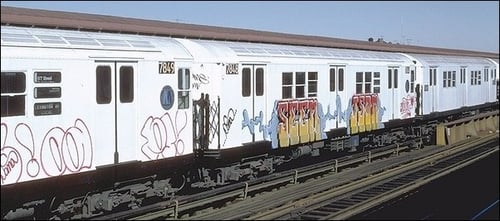
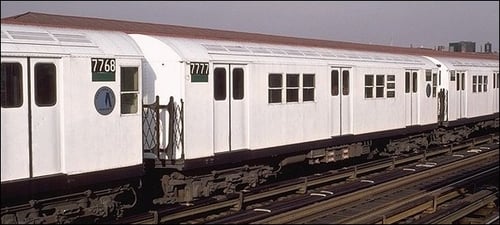 Photo Credit: nycsubway.org
Photo Credit: nycsubway.org
Make Your Mark
Here’s to amazing art across the city we love, including the masterpieces that are hidden underground and the ones that reach tens of stories into the sky. They all make their mark. However, as the Underbelly Project and the Clean Car Project have shown, no art lasts forever – and the more daring your art is, the less likely it is to survive long term.
As architects and builders, the fleeting nature of art can haunt us. Solid, long-lasting buildings can be torn down and even the most celebrated architects have works that fall into ruin. Though structures tend to last far longer than graffiti art, someday the things we build, no matter how beautiful they are, will be gone.
Nothing lasts forever, so it’s up to us to make sure our buildings make the deepest impact in the time they have and for the audience in front of us. Are you ready?
Subscribe to the Milrose Insights blog to get inspiring articles and important news delivered directly to your inbox.


